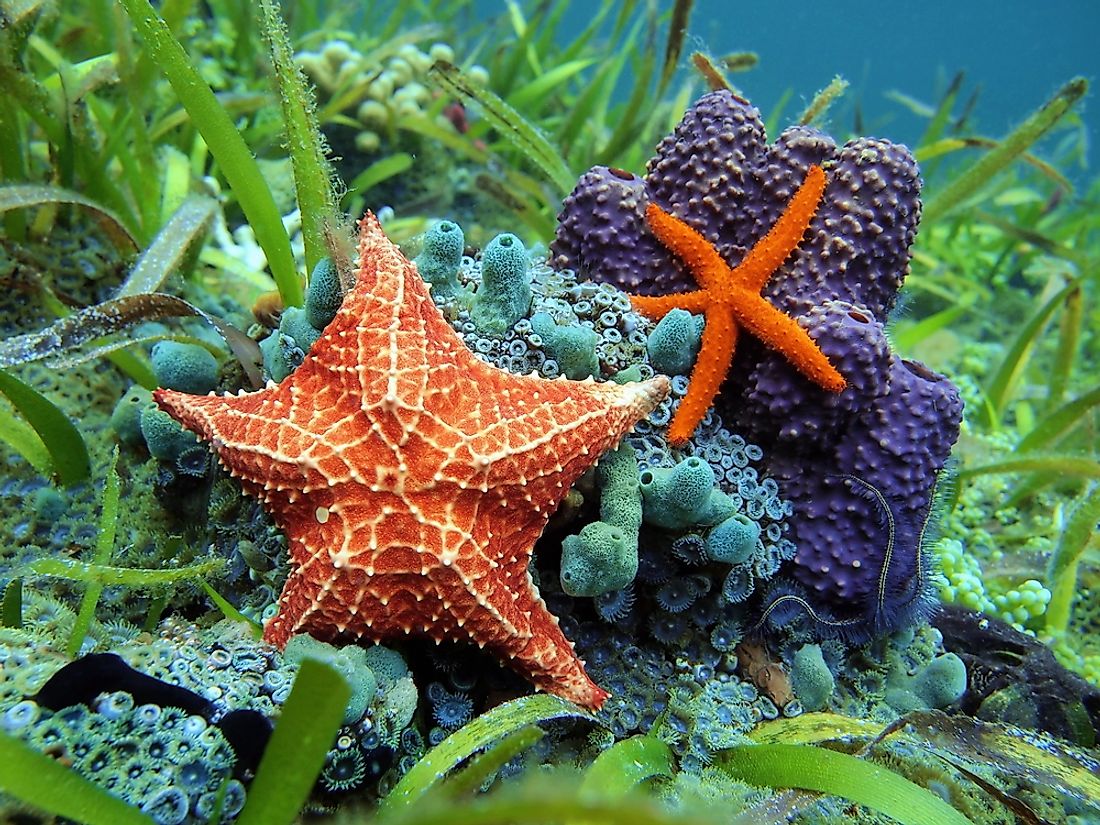What are Echinoderms?

Echinoderms are members of the phylum Echinodermata which is a group of marine animals. The term is derived from Greek words which mean ‘spiny skin’. The Echinodermata phylum has about 7,000 species representing all types of marine habitats except fresh-water and land-based (terrestrial) habitats. Echinoderms include sea urchins, sand dollars, sea cucumbers, sea lilies, and starfish or sea stars.
Physical Description
Adult echinoderms have pentaradial symmetry. This means that their bodies are five-sided. The animals either have five arms on the lower side or multiples of five going up to 200 arms. Their bodies are protected by a calcium carbonate shell which is in turn covered by skin.
The echinoderm skin serves many purposes including supporting and maintaining the skeleton, possession of pigment cells, which give the different species different colours, detecting movement with the help of motion detecting cells, and with the help of gland cells secretion of gluey fluids or poison to keep off predators.
Habitat
The phylum Echinodermata is represented in most of the marine environments. This phylum which makes up almost 90% of the marine population thrives better in areas with reefs, shallow shores and deeper parts of the oceans.
A greater part of this population is benthic which means that they live on the floor of the water bodies, but some species like the deep sea cucumbers float on water. The crinoids used to exhibit pseudo-planktonic tendencies, where they attached themselves to floating materials in the sea which aided in their distribution.
Reproduction
Echinoderms occur either as males or females, becoming sexually mature when they turn two or three years old depending on the environmental factors in the habitat or the species. The female releases up to one hundred million eggs in the water to be fertilized by the male sperm which is also released into the water. Species like the starfish have been known to brood their eggs. After fertilization, larvae develop which later grows into adults.
This phylum has the special ability to regenerate, meaning that when an appendage breaks off, another one can regrow in its place.
Some species reproduce asexually; where the body breaks into two parts after which the lost part and the remaining part regrows its missing appendages bringing forth a whole new animal.
Behaviour
Echinoderms survive due to a functional nervous system since they lack a brain. The presence of small eyes on their arms also help detect light or darkness. Their feet help detect smells thus locating food. The echinoderm’s respiratory system can be described as primitive and poorly developed as they use very basic gills and their feet to inhale and exhale.
This group of animals face of predators thus a need to protect their existence. They achieve this by the use of spines, skeletons, toxins and the production of a sticky substance.
Diet
The diet and feeding tendencies of echinoderms vary depending on the taxa or species of the particular animal. Most starfish species are carnivores and detritivores which means they feed on decaying animal and plant matter. Crinoids feed by absorbing floating food particles from water. Sea urchins, on the other hand, are herbivores while sea cucumbers fix their feeders in sand picking what is edible.











